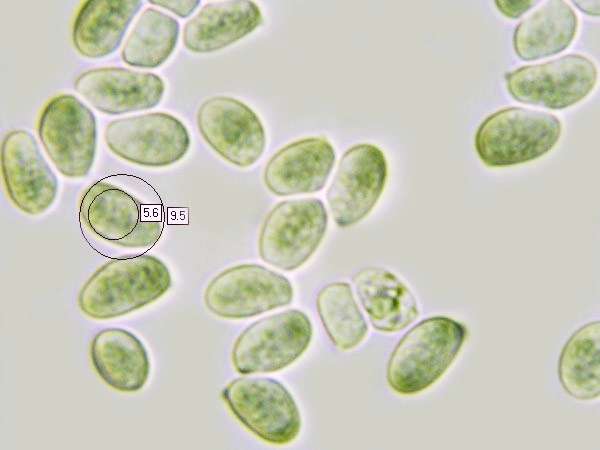Pseudoclitocybe cyathiformis (Bull.) Singer - Goblet
Phylum: Basidiomycota - Class: Agaricomycetes - Order: Agaricales - Family: Tricholomataceae
Distribution - Taxonomic History - Etymology - Identification - Culinary Notes - Reference Sources
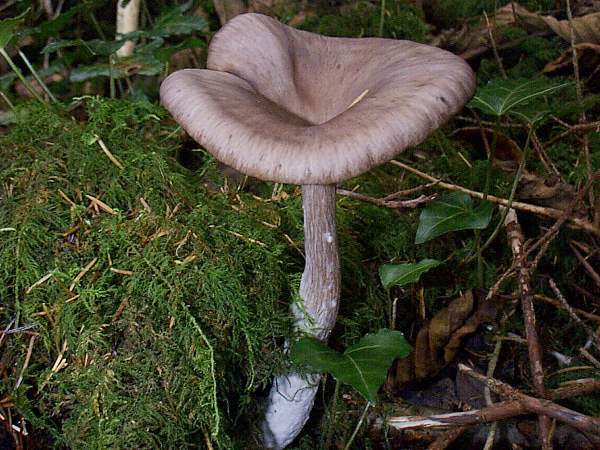
Appearing in late autumn, these dark funnel-shaped caps on tall scaly stems are very easily recognised. Pseudoclitocybe cyathiformis usually grows in woodland, on decayed hardwood.
Distribution
Pseudoclitocybe cyathiformis, the Goblet, is common throughout Britain and Ireland as well as in most parts of mainland Europe; this species is also found throughout much of Asia, and it is present in parts of North America.
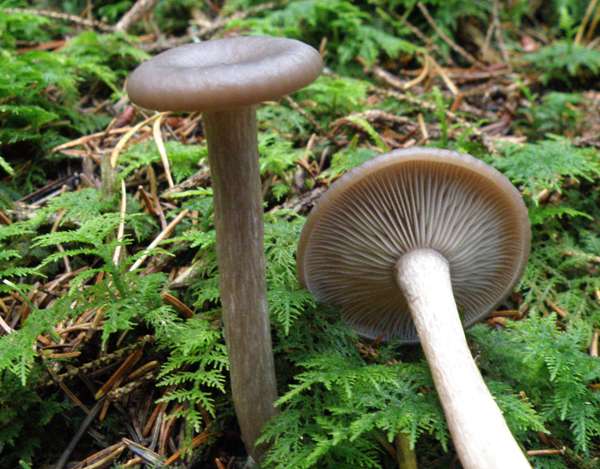
Taxonomic history
The Goblet mushroom was described scientifically in 1792 by French naturalist Jean Baptiste François Pierre Bulliard, who gave it the binomial name Agaricus cyathiformis.
Only as recently as 1956 was this distinctive woodland mushroom transferred to its present genus Pseudoclitocybe, when German-born mycologist Rolf Singer renamed it as Pseudoclitocybe cyathiformis.
Synonyms of Pseudoclitocybe cyathiformis are many, including Agaricus cyathiformis Bull., Agaricus tardus Pers., Omphalia tarda (Pers.) Gray, Clitocybe cyathiformis (Bull.) P. Kumm., Clitocybe cyathiformis var. cinerascens (Batsch) P. Karst., Cantharellula cyathiformis (Bull.) Singer, and Omphalia cyathiformis (Bull.) Kühner & Romagn.
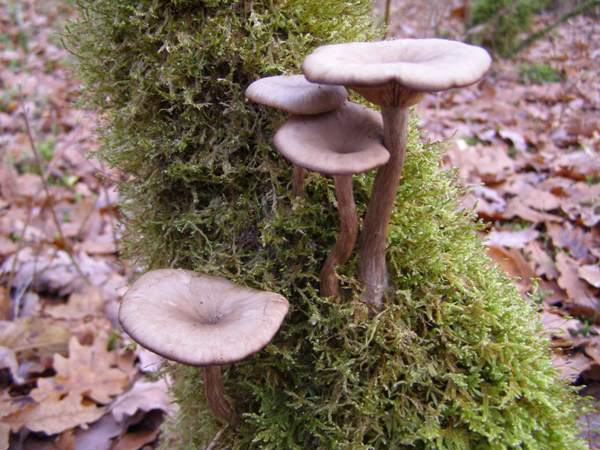
Pseudoclitocybe cyathiformis is the type species of the small genus Pseudoclitocybe, of which only three species are currently known to occur in Britain.
Etymology
Pseudoclitocybe, the generic name, implies that species in this group masquerade or look very much like as Clitocybe (funnel) mushrooms, which indeed they do. The specific epithet cyathiformis means in the form of a chalice (a goblet!).
Because of the shape of its cap plus the long slender stem, this sombre woodland mushroom has been given the common name of the Goblet. Although they are quite variable in cap colour and texture depending on habitat, humidity and exposure to sunlight, the combination of funneled cap, forking gills and long stem make this one of the easiest of woodland mushrooms to identify.
Identification guide
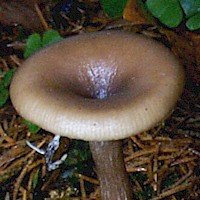 |
CapThe dark cap is strongly funnel shaped and grows to between 4 and 8cm in diameter. Variously dark grey-brown or leather brown, the smooth caps retain an inrolled, faintly striate margin. |
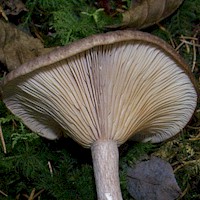 |
GillsThe gills are adnate or slightly decurrent, and they are forked - it is this forking which differentiates Pseudoclitocybe species from the Clitocybe funnel caps. White at first, the gills turn greyish-beige as the fruitbody matures. |
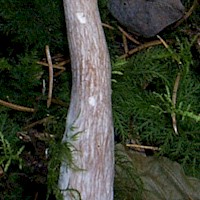 |
Stem5 to 10mm in diameter, the grey fibrous stems grow to between 6 and 10cm tall. and thicken slightly towards the base, which is sometimes clavate. The stem is covered in longitudinal silky brown fibrous striations. There is no stem ring. |
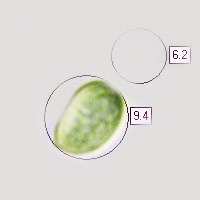 |
SporesEllipsoidal, smooth, 8.5-10 x 5-6.5µm; amyloid. Spore printCreamy-white to pale grey. |
Odour/taste |
Not distinctive. |
Habitat & Ecological role |
Saprobic, on soil or on well rotted stumps in mixed woodland. |
Season |
September to December and occasionally into early spring in Britain and Ireland. |
Similar species |
Provided the forking gills, long fibrous stem and other identification characters described above are checked carefully, the Goblet is unlikely to be confused with any other species. |
Culinary Notes
Although not all authorities list this as an edible mushroom, despite its sombre appearance the Goblet mushroom is widely reputed to be quite good to eat provided it is thoroughly cooked. (The stems are very tough and should certainly be discarded.) There are, however, reports of some people suffering adverse reactions after eating this species, and so if trying them for the first time only a very small portion should be consumed. When collecting Goblet mushrooms for food, great care is necessary to avoid accidentally gathering poisonous funnel species such as Clitocybe rivulosa.
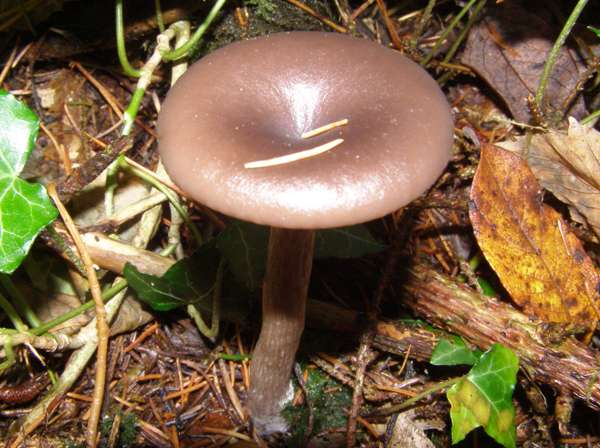
Reference Sources
Fascinated by Fungi, 2nd Edition, Pat O'Reilly 2016, reprinted by Coch-y-bonddu Books in 2022.
British Mycological Society (2010). English Names for Fungi
Dictionary of the Fungi; Paul M. Kirk, Paul F. Cannon, David W. Minter and J. A. Stalpers; CABI, 2008
Taxonomic history and synonym information on these pages is drawn from many sources but in particular from the British Mycological Society's GB Checklist of Fungi.
Fascinated by Fungi. Back by popular demand, Pat O'Reilly's best-selling 450-page hardback book is available now. The latest second edition was republished with a sparkling new cover design in September 2022 by Coch-y-Bonddu Books. Full details and copies are available from the publisher's online bookshop...
